Jaw-dropping treasures the British royal family owns
The royal treasure trove

Sceptre with the Cross

Surely one of the most valuable items in the Royal Collection, the Sceptre with the Cross (far left in this replica set of the Crown Jewels) is presented to the monarch during their coronation. Weighing over 2.2lb, it has been in use since 1661 but was transformed in 1910 with the addition of the Cullinan I diamond, the largest clear-cut diamond in the world, weighing 530.2 carats and estimated to be worth $495 million.
Cullinan III and IV diamonds brooch
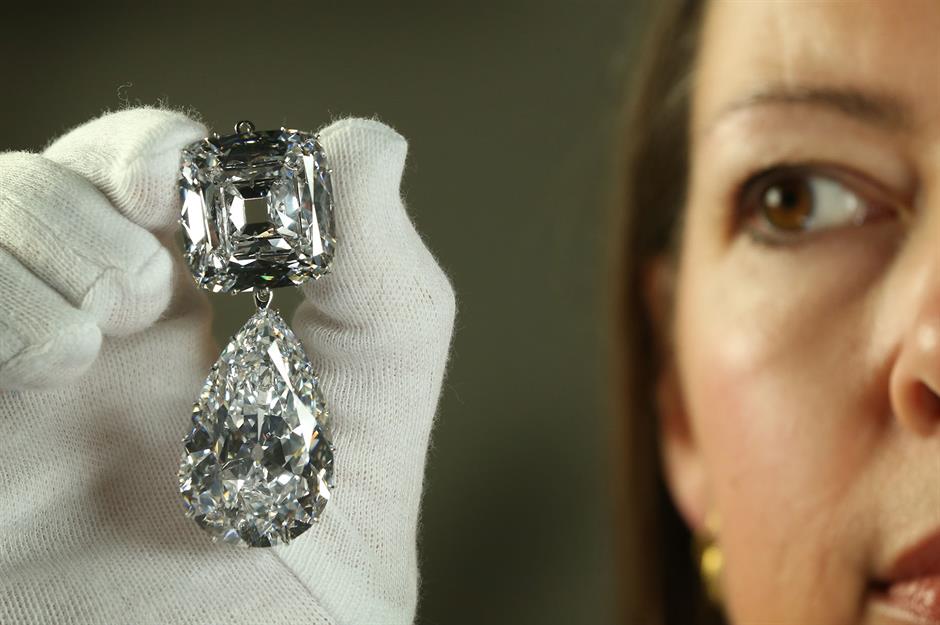
The Cullinan Diamond, which weighed 3,106 carats in its rough state, was discovered in 1905 at a South African mine and presented to King Edward VII as a gift. It was cut down into nine diamonds, the largest of which are in the Sceptre with the Cross and the Imperial State Crown. Diamonds III and IV, weighing 94.4 and 63.6 carats respectively, were made into a brooch. It is thought to be worth $96.5 million. In total, the Crown Jewels are estimated to be worth around $6.19 billion.
Imperial State Crown of George I

Made in 1714 for King George I, this crown replaced that of Charles II. It took some of the old crown’s jewels and pearls, adding 265 new pearls, 160 diamonds, six emeralds and two sapphires. It was used until 1838 but then emptied of its jewels and discarded by the royal family. It was acquired by the Brunei royal family in 1995, when it had just been valued at £576,000, which is $1.4 million in today's money, and given back to the UK Crown to be put on display at the Tower of London.
Crown of Queen Elizabeth the Queen Mother

St Edward’s Crown
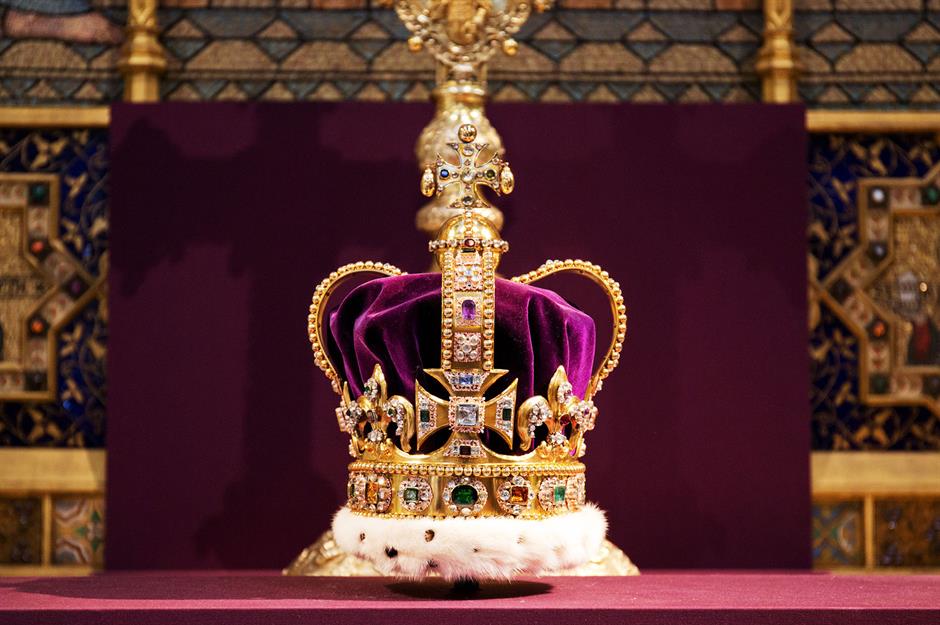
Victoria’s Small Diamond Crown
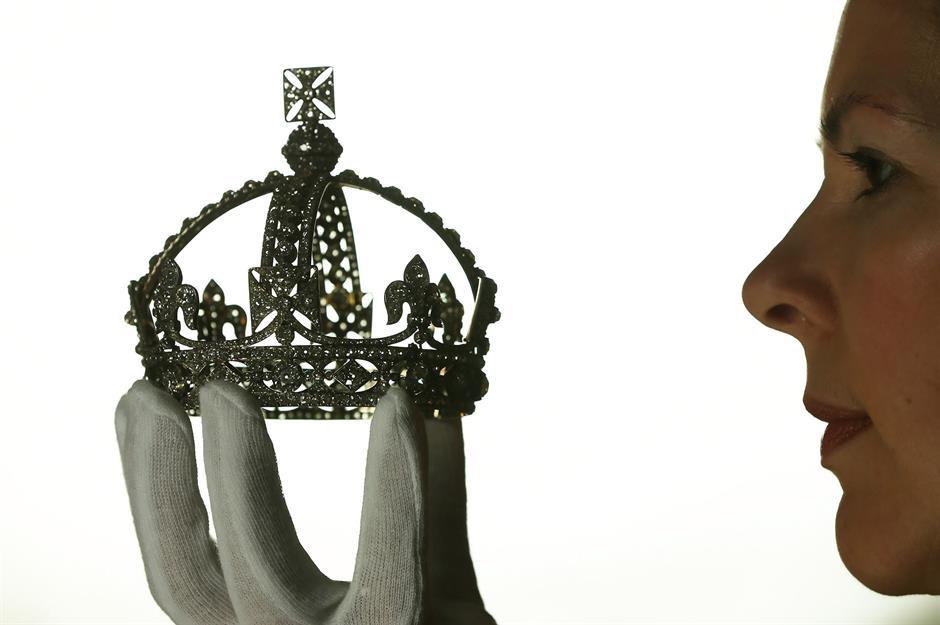
Diamond Diadem
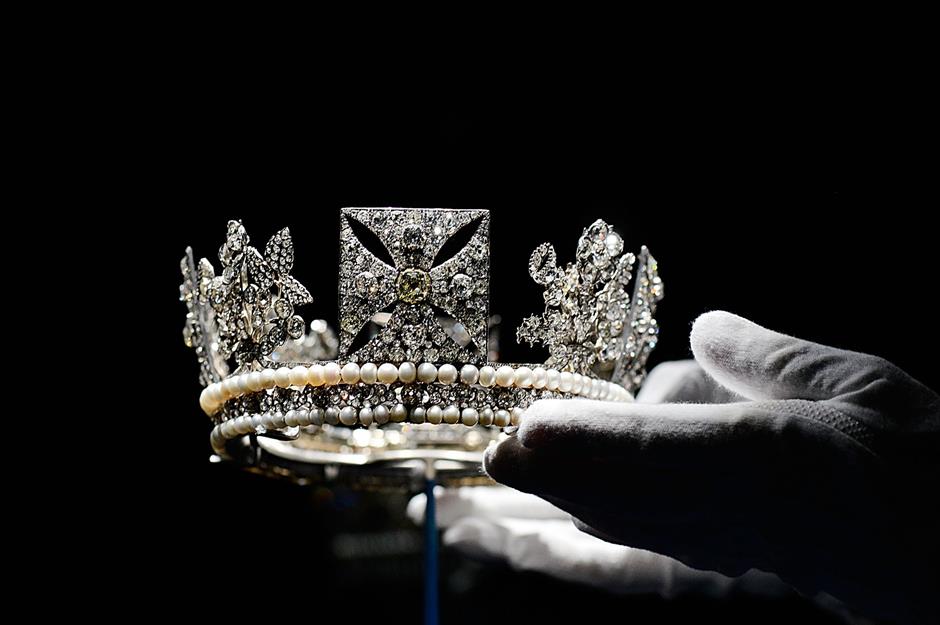
Diamond Diadem
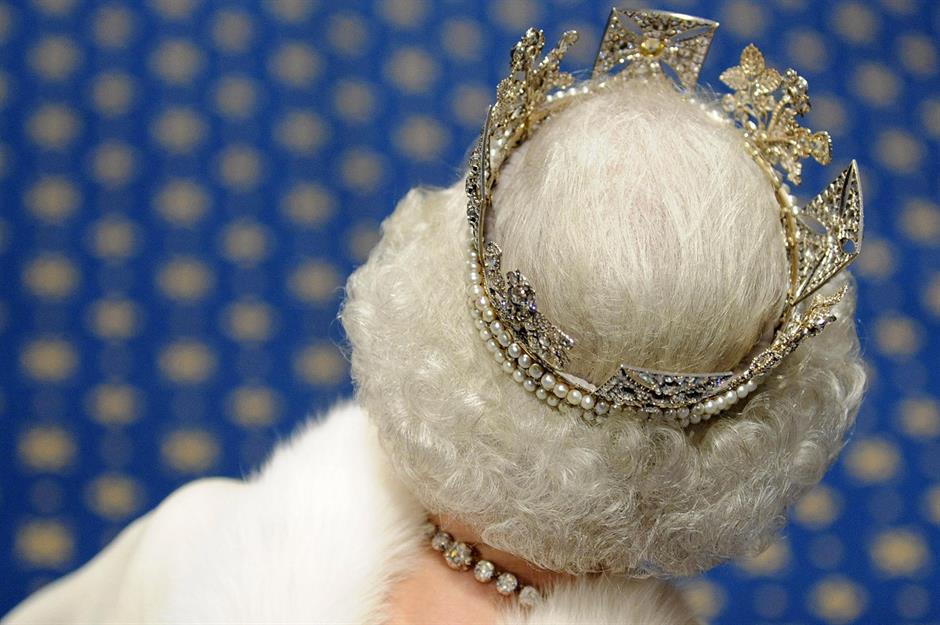
Imperial State Crown
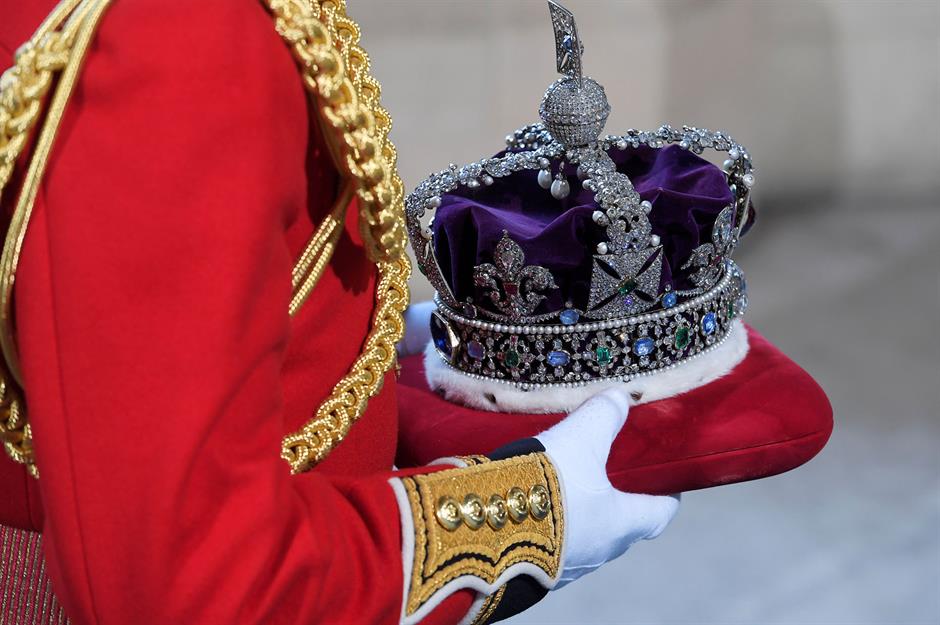
Imperial State Crown
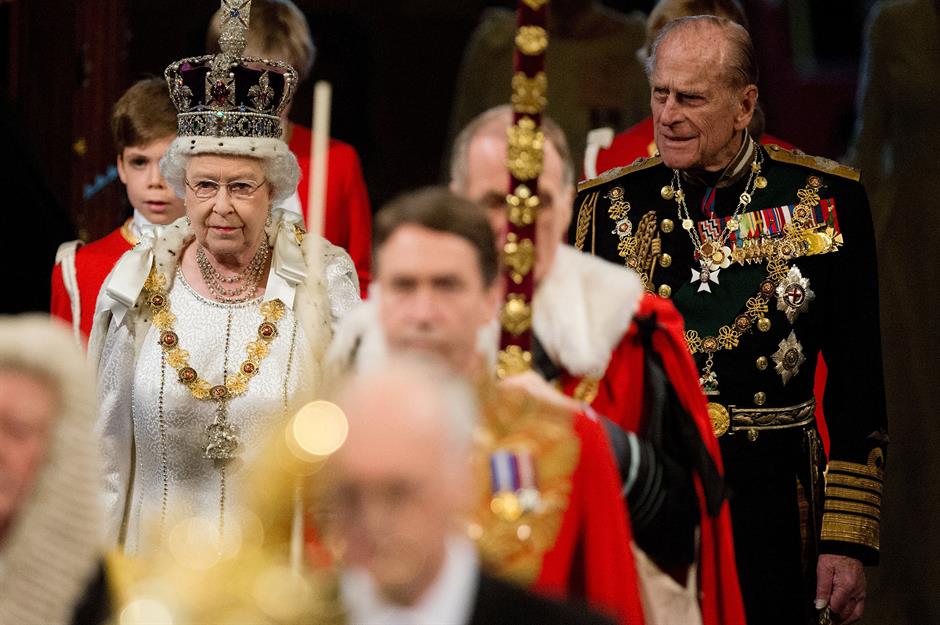
Queen Mary's Diamond Bandeau
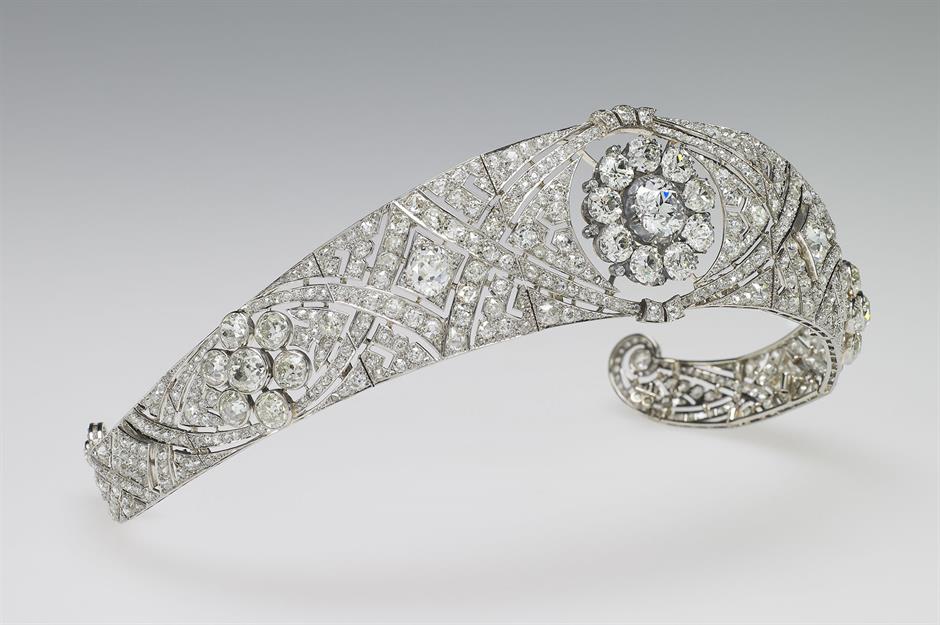
Queen Mary's Diamond Bandeau
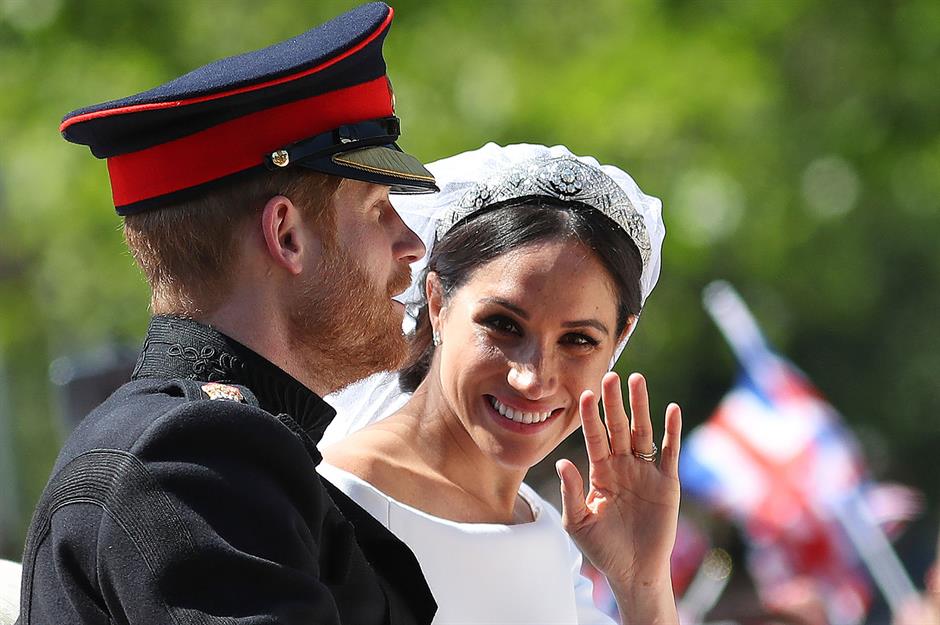
The Duchess of Sussex wore the tiara to hold her 16.4-foot-long veil in place for her wedding to Prince Harry at St George’s Chapel, Windsor. The trinket sparkled the brightest among the Cartier earrings and bracelet accessorizing her Givenchy wedding gown.
Delhi Durbar Tiara
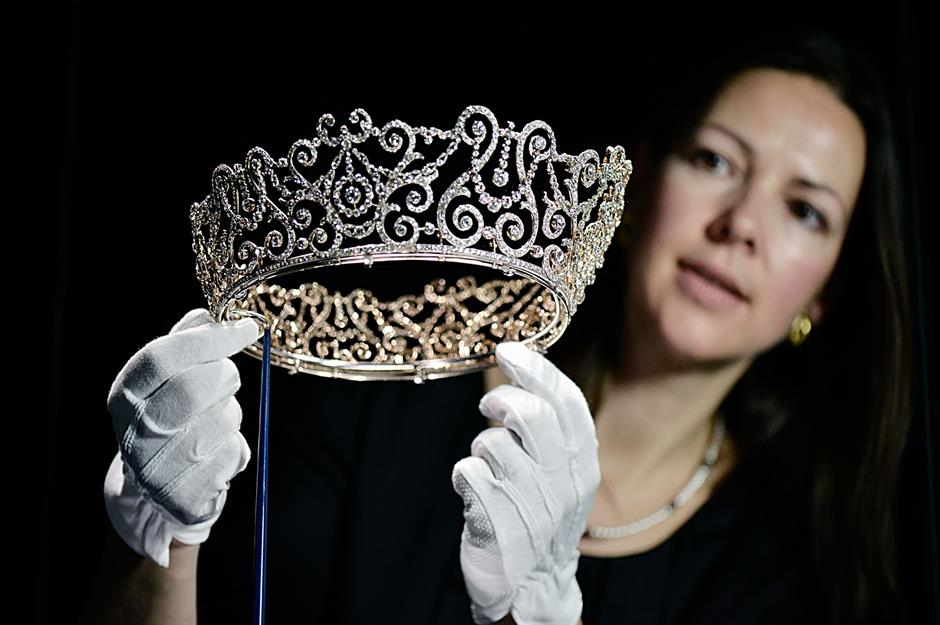
Mosaic Fabergé egg

Lobmeyr glass chandelier

Astronomical clock
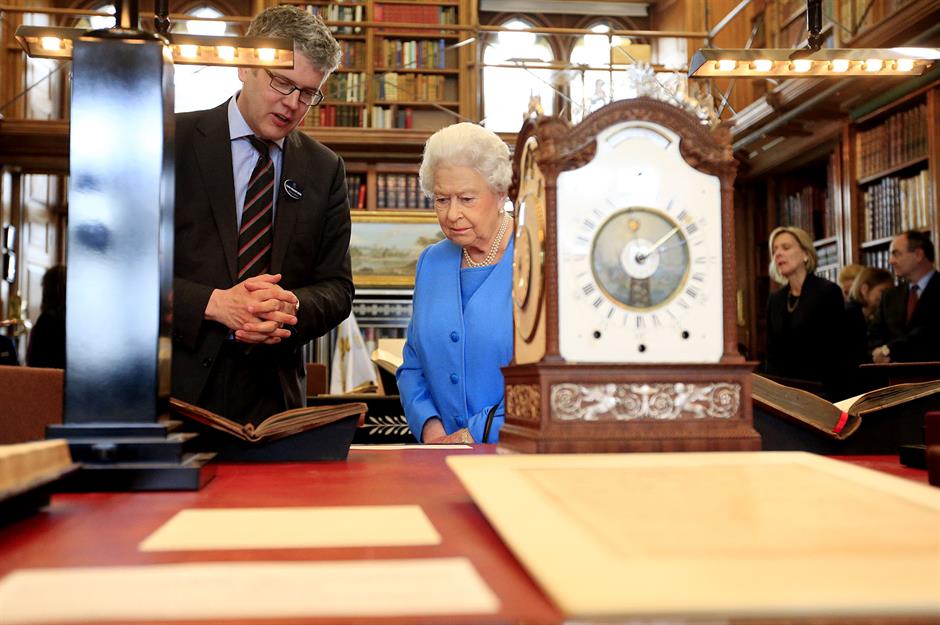
The Royal Family in 1846 – Franz Xaver Winterhalter
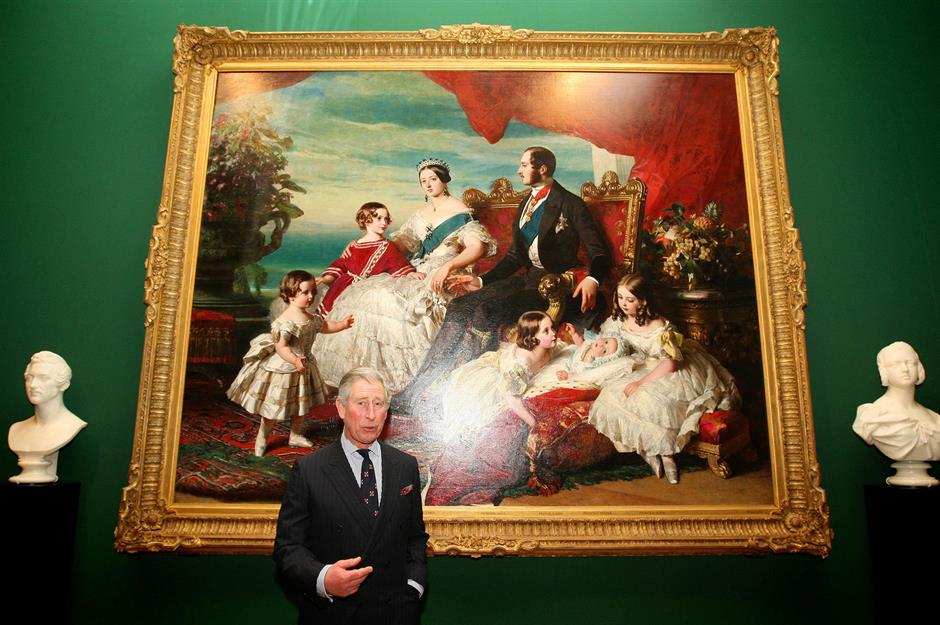
Cimabue's Madonna Carried in Procession – Frederic Leighton

The Calling of Saints Peter and Andrew – Caravaggio
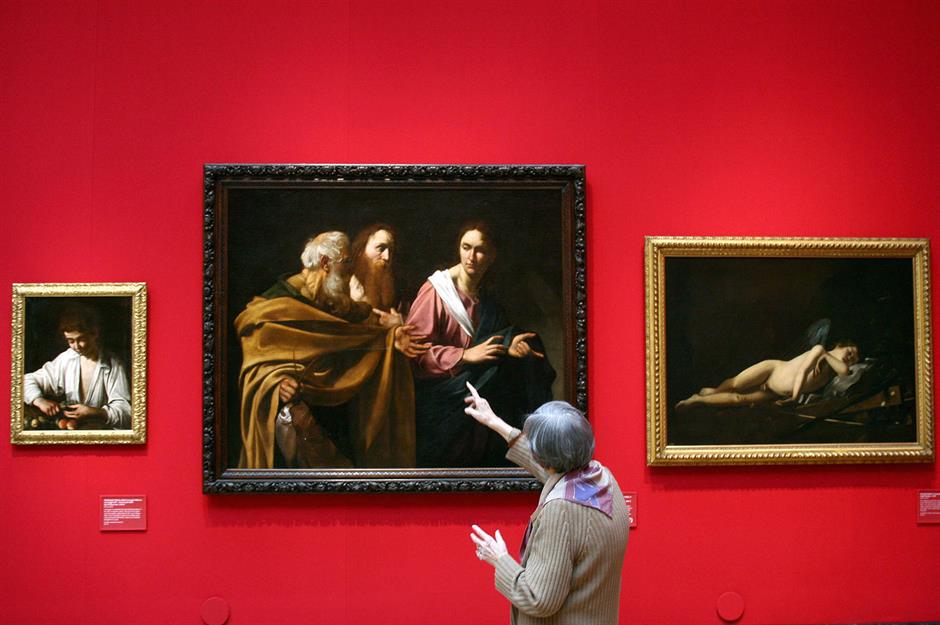
Portrait of the Duke of Wellington – Sir Thomas Lawrence
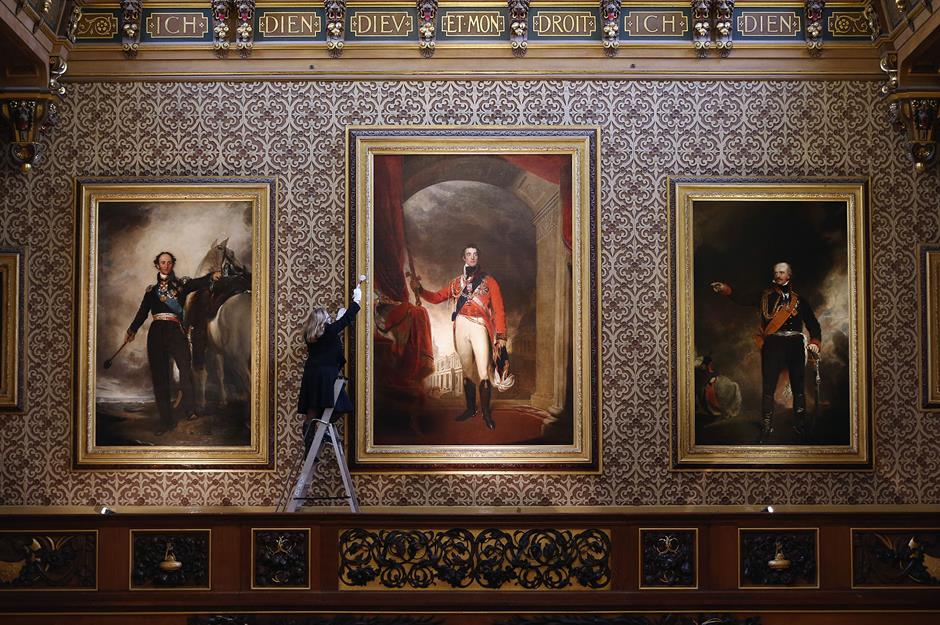
Nymph sculpture – Antonio Canova
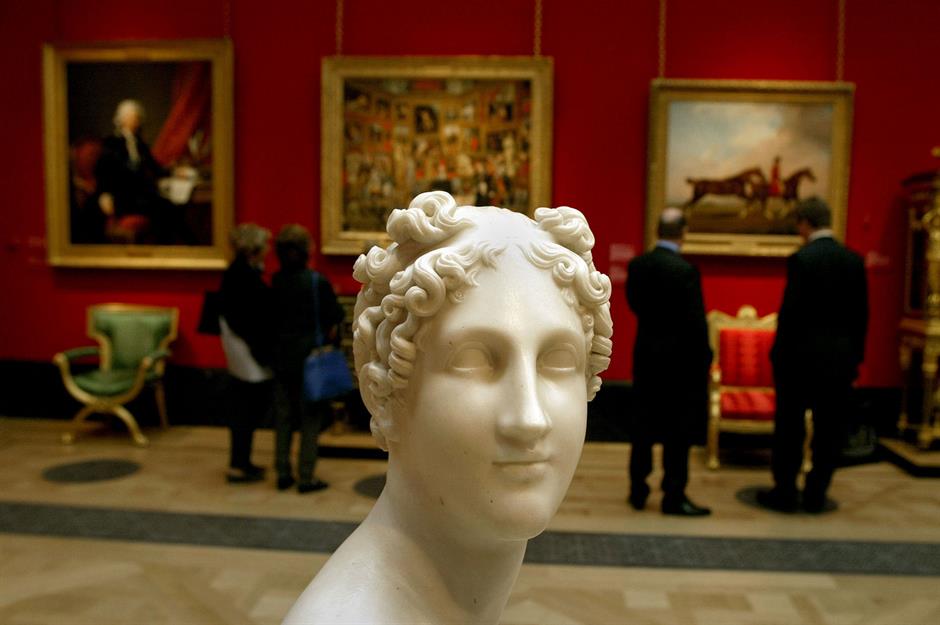
Massacre of the Innocents – Pieter Bruegel the Elder

This 16th-century painting by Pieter Bruegel the Elder was acquired over a century later by Charles II. Painted as a representation of the murder by King Herod’s soldiers of all male children in Palestine, it was set in Bruegel’s own time. But there are no bodies and no blood. The painting’s first owner, the Holy Roman Emperor Rudolph II, ordered that all the dead babies be painted out and replaced with animals, objects and food. There are some 50 Flemish paintings from the 15th to 17th centuries in the King's Dressing Room at Windsor Castle.
Presumed self-portrait – Giovanni Benedetto Castiglione
Agatha Bas – Rembrandt
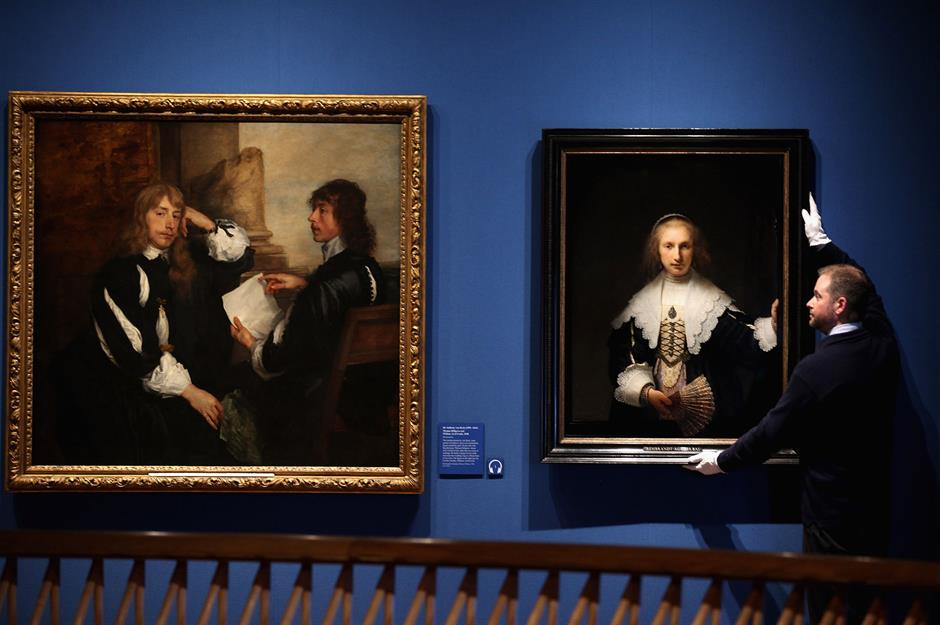
“One of the most beautiful portraits” in the collection, according to the Royal Collection Trust, this portrait of Agatha Bas (right) has a companion painting depicting Agatha’s wool merchant husband Nicolaes van Bambeeck, which hangs in Brussels' Musée Royal des Beaux-Arts. There are five paintings by Rembrandt in the Royal Collection, the earliest of which, The Artist's Mother, was presented to Charles I before 1633, and was one of the first works by Rembrandt to reach England. Rembrandts sell for millions. This portrait is on display in the Picture Gallery at Buckingham Palace.
HM Queen Elizabeth II – Lucian Freud
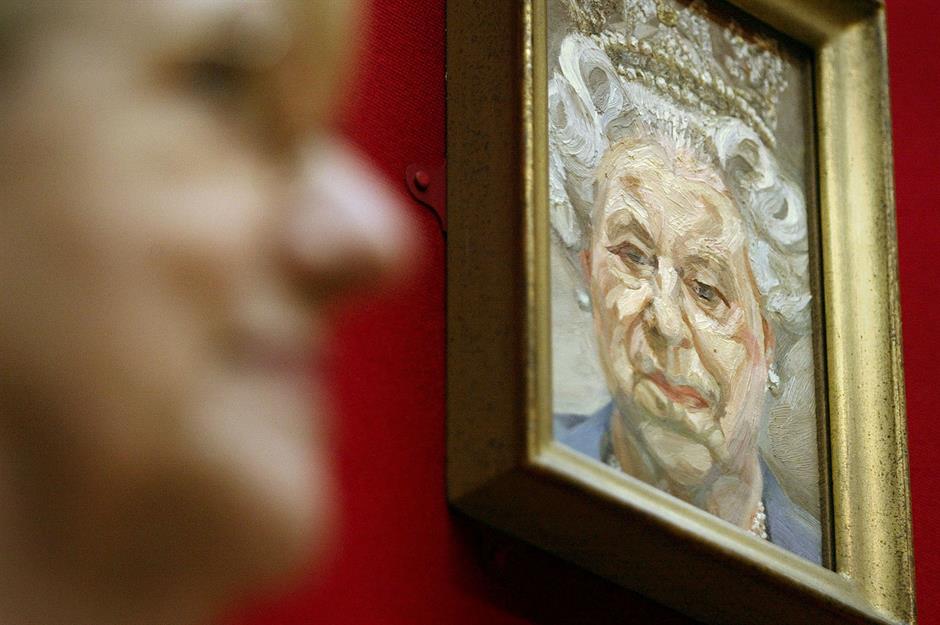
Not all pictures in the Royal Collection are inherited. This rather unflattering painting of the Queen (wearing her Diamond Diadem) was painted by Lucian Freud, the grandson of psychoanalyst Sigmund Freud, at the late British painter’s behest. The picture was declared a “travesty” by one UK newspaper when it was presented by Freud to the Queen in 2002.
Eos – Sir Edwin Landseer
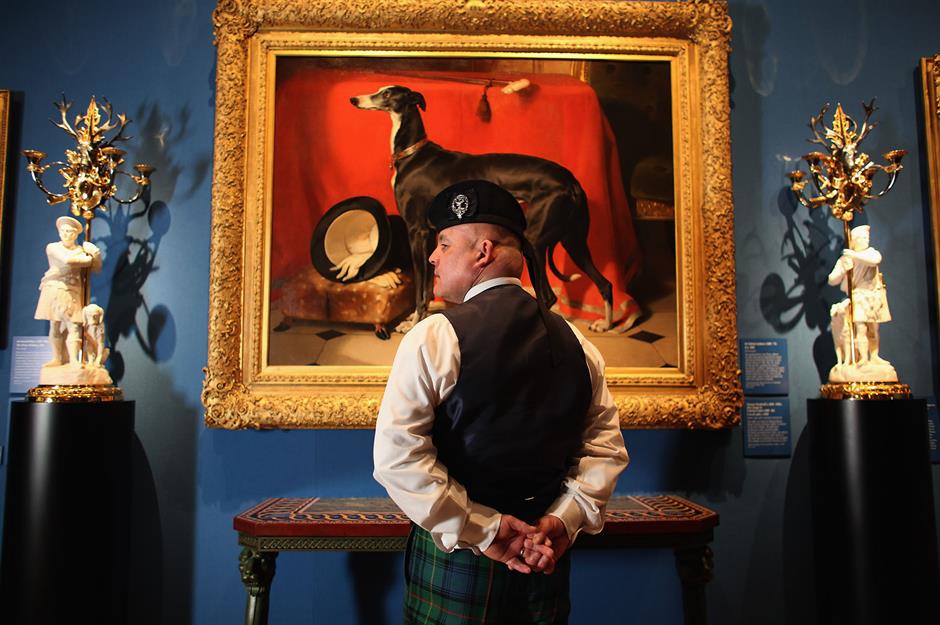
Eos, the greyhound that accompanied Prince Albert when he came to the UK to marry Queen Victoria, features in several portraits and sculptures in the Royal Collection. This painting by Sir Edwin Landseer is dated 1841 and was presented by Queen Victoria as a Christmas present to her husband. Landseer produced some 40 works for the royal couple. His Monarch of the Glen, one of the most recognizable paintings of Scotland, is valued at $9.9 million.
The Music Lesson – Johannes Vermeer
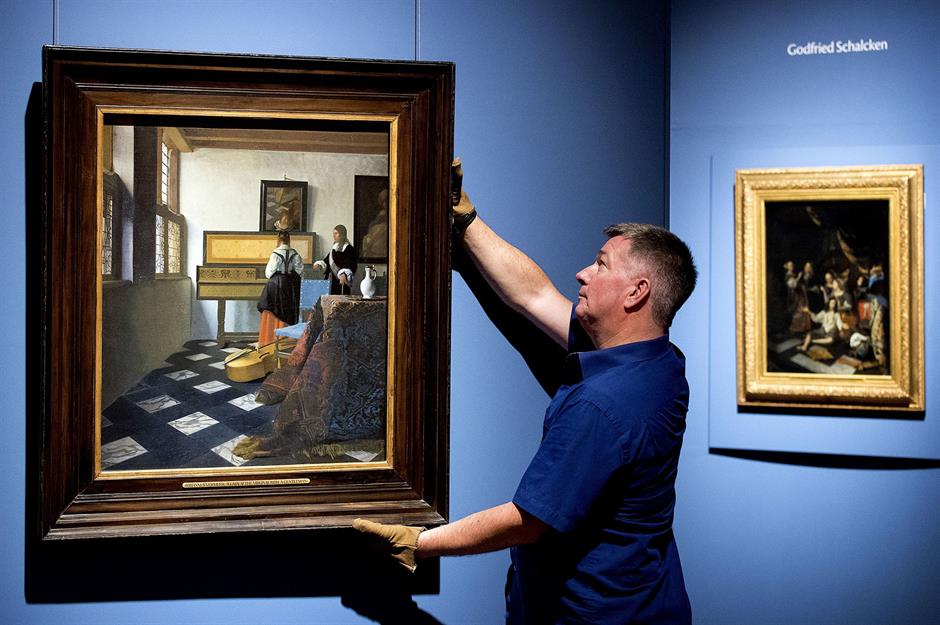
The Music Lesson is one of around 34 Vermeers in the world and probably one of the best-known paintings in the Royal Collection. The Dutch artist’s work rarely comes up for sale, unsurprisingly, but his A Young Woman Seated at the Virginals sold for £16.2 million in 2004, which is $309 million today.
Leonard Da Vinci sketches
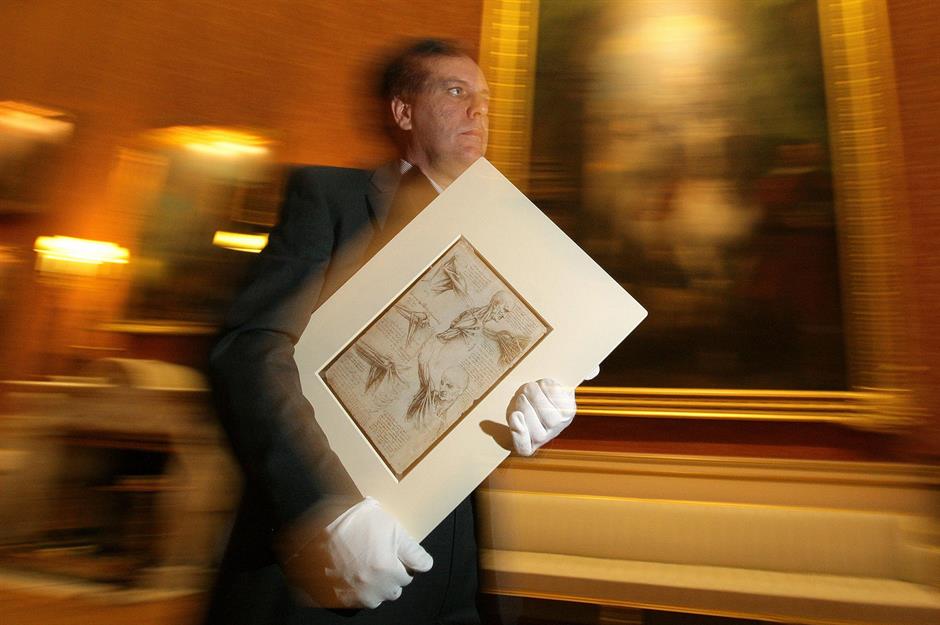
One of the most extraordinary sets in the Royal Collection contains some 600 Leonardo Da Vinci drawings, including all his anatomical sketches, such as The Muscles of the Neck and Shoulder (pictured) from 1510-11. They are presumed to have been acquired by Charles II, although it is not clear how or why.
Pop art – Andy Warhol
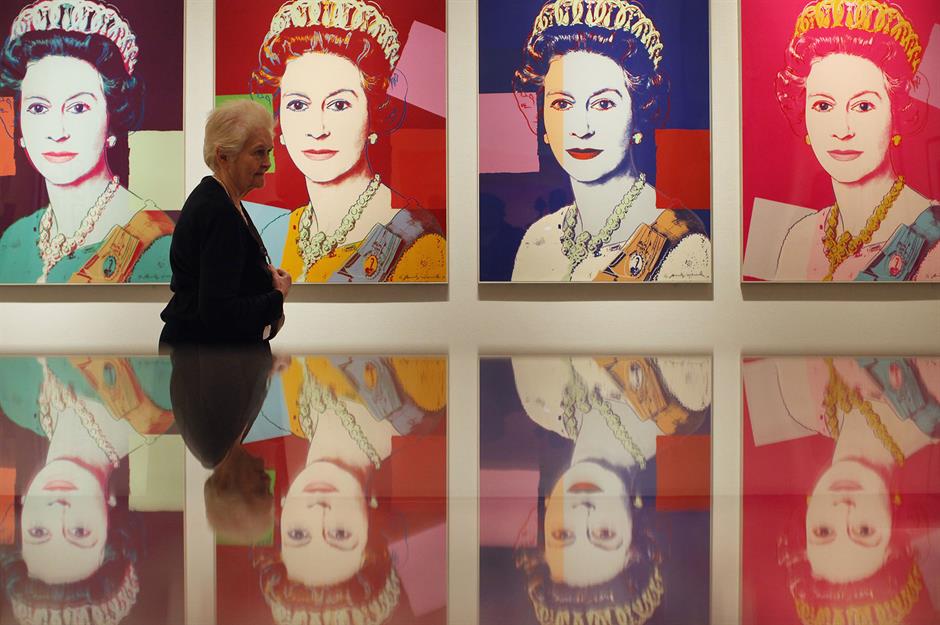
With so many Old Masters in her collection, it’s a surprise to learn that the Queen is a fan of contemporary art but, in 2012, four screen prints of her by Andy Warhol were bought for the Royal Collection. Made in 1985, they are based on a photograph taken in 1977 for the Queen’s Silver Jubilee. It is unknown how much the Queen paid for her pictures.
Twopenny Blue Mauritian stamp
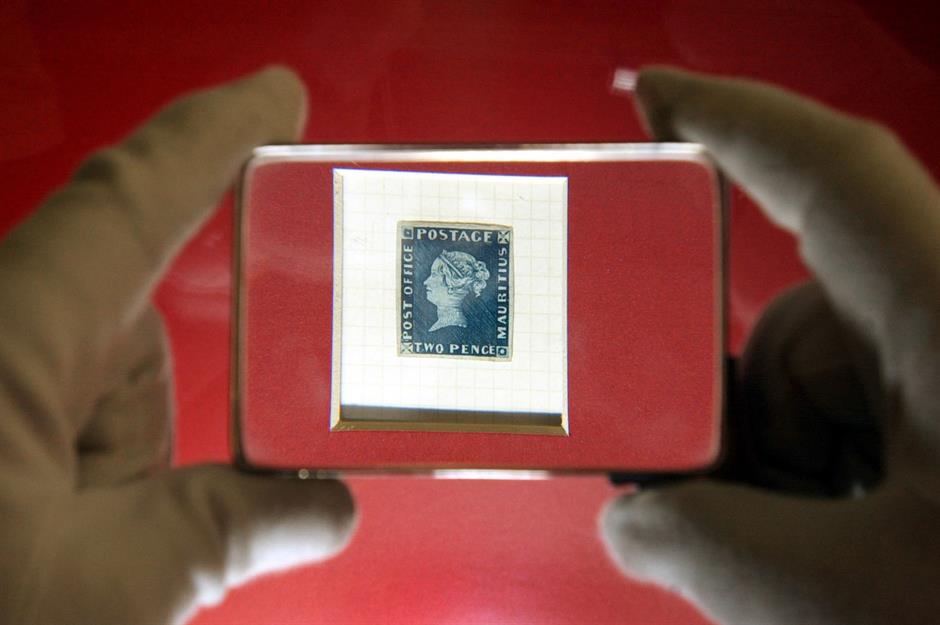
The Queen is the fifth monarch to inherit the Royal Philatelic Collection, thought to be worth $123.5 million. The centerpiece is an extremely rare Twopenny Blue Mauritian stamp from 1847, valued at $2.47 million and the first stamp to be issued by a colonial post office. It was bought at auction by the future King George V in 1904 and it's said that afterwards a courtier asked him if he had heard that “some damned fool” had just bought it, to which he replied: "I was that damned fool.”
You've seen the riches, but now discover the British royal family's surprisingly frugal habits
Comments
Be the first to comment
Do you want to comment on this article? You need to be signed in for this feature